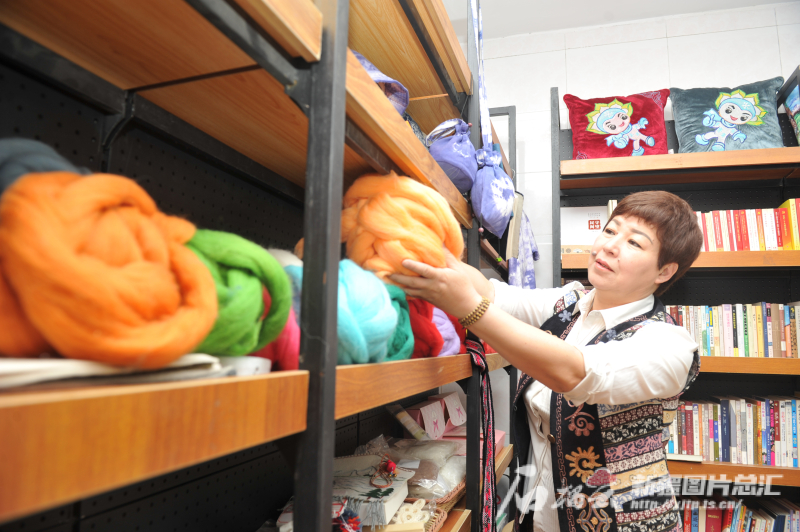
Photo taken on March 10, 2025 shows Hatima sorts out the colored wool material for felt making.
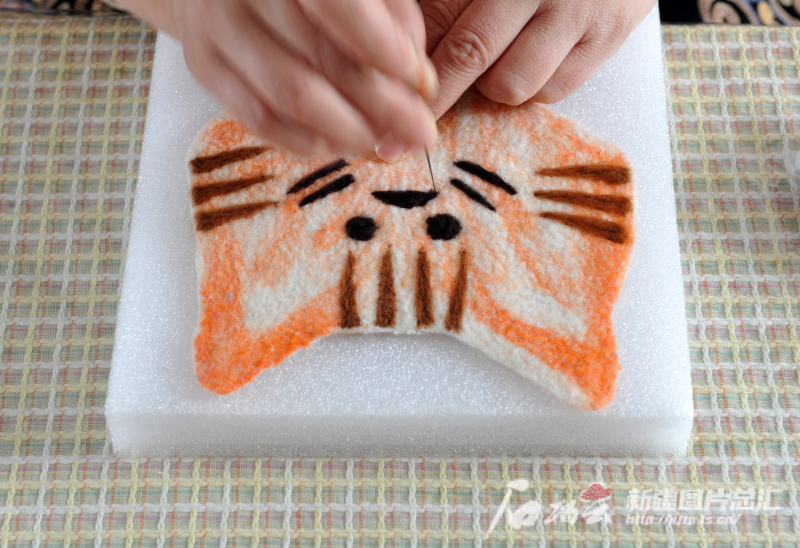
Photo taken on March 10, 2025 shows Hatima uses a specially designed needle with barb to repeatedly pierce wool fibers. This process causes the fibers to entangle in a three-dimensional space, forming a more intricate and stable structure. The needle felting technique greatly expands the creative possibilities, allowing for the creation of various complex shapes and patterns, which in turn enriches the expressiveness of felt products.
Shiliuyun-Xinjiang Daily (Reporter Qin Meihua) news: Hatima Ainaidu is a representative inheritor of the Kazak felt-making craft in Urumqi, and she is also the protector of this millennia-old skill. With her deft hands and unwavering dedication, this ancient craft has been revitalized in modern society.

Photo taken on March 8, 2025 shows Hatima (front row, first from left) takes a group photo with students at the Xinjiang International Grand Bazaar in Urumqi, northwest China's Xinjiang Uygur Autonomous Region.
Felt-making, an art that originated thousands of years ago, was once an indispensable part of nomadic life. Back then, people accidentally discovered that animal fibers like wool, when pressed and kneaded, miraculously transformed into dense and durable felt, becoming the raw material for tents, clothing, shoes, hats, and decorations. From a young age, Hatima learned felt-making from her elders, not only mastering traditional techniques but also continuously innovating by incorporating modern elements into her work.
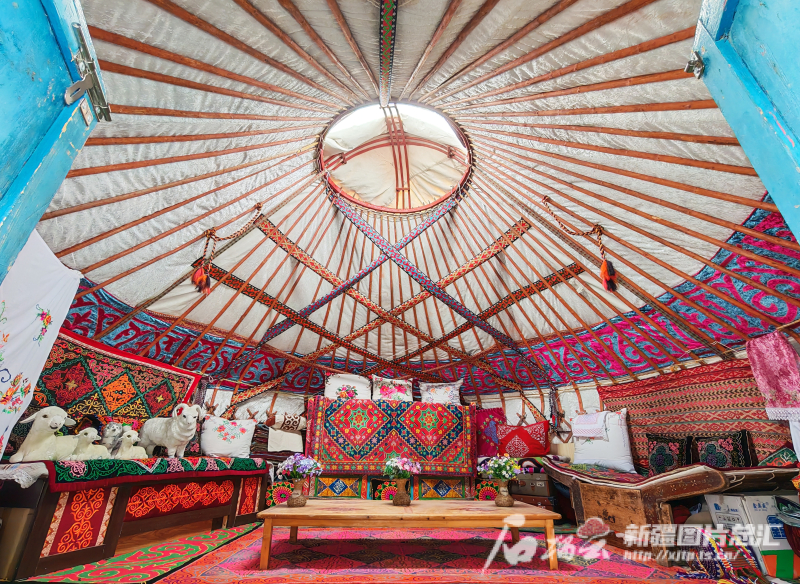
Photo shows a yurt, the earliest felt work of the Hatima family, which is more than 110 years old.
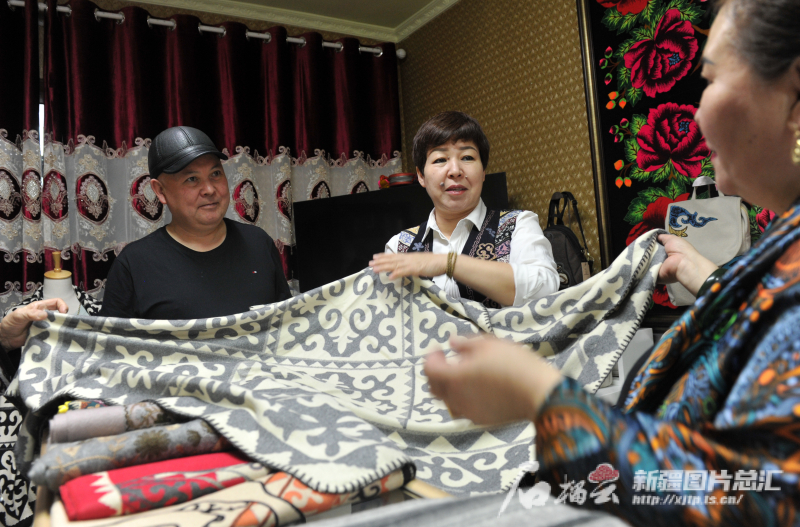
Photo taken on March 10, 2025 shows Hatima (center) introduces the wool scarf she designed with her family to the villagers of Miaoergou Village, Shuixigou Town, Urumqi County, northwest China's Xinjiang Uygur Autonomous Region.
On March 10, the reporter visited Hatima's studio at Miaoergou Village in Shuixigou Town, Urumqi County, where the air was filled with a faint scent of wool. Hatima was focused on spreading the white wool, gentle and skillful. "Laying the wool is the first step in felting. The wool must be spread evenly and consistently in thickness to ensure the quality of the product," Hatima explained while working. After laying the wool, she began spraying warm water and gently patting it with her hands to interweave the wool fibers.
The next step in the process tests the skills even more. Hatima rolled the damp wool with a rolling pin and then began to press and roll it forcefully. "Felting requires patience and strength; this action needs to last about an hour, and the pressure must be even, without haste," Hatima said. After repeated rolling and pressing, the loose wool gradually became dense, forming a piece of felt that began to take shape.
Subsequently, Hatima washed the felt in warm water, removing impurities and grease. The cleaned felt needed to be rolled and pressed again, and the edges and corners were shaped by hands to ensure it was neat and sturdy. Finally, the felt was laid out in the sun to dry completely..
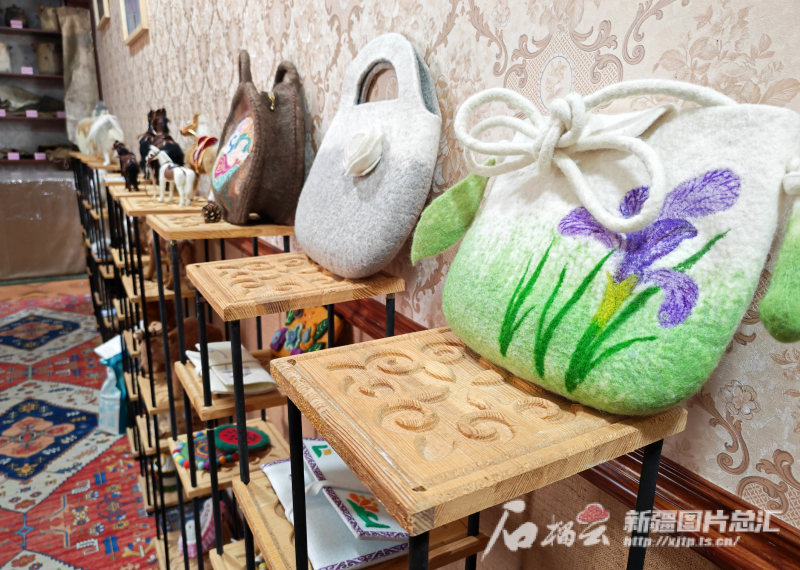
Photo shows the studio full of felt-making works.
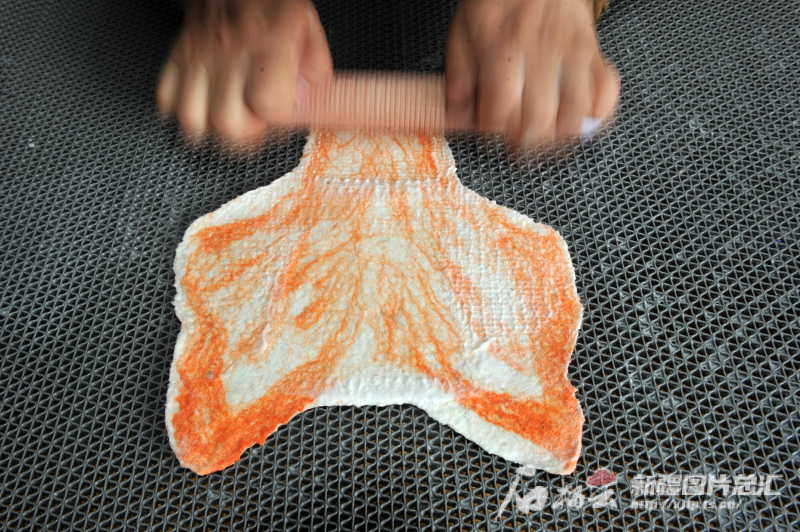
Photo taken on March 10, 2025 shows Hatima rolls up the wet wool with a rolling pin and begins to press it repeatedly.
"Each piece of felt is unique, embodying the dedication and time of craftsman." Hatima said, stroking the newly completed felt work, her eyes filled with pride. Her works not only retain the practicality and durability of traditional felt but also add a touch of modern aesthetics, making them highly popular. She said that in terms of design, felt products are diverse. There are everyday items like felt coasters and handbags that emphasize the combination of functionality and aesthetics, with smooth, simple, and elegant lines; there are also decorative items full of creativity and artistic sense, such as animal-shaped felt dolls and abstract felt sculptures. Through the artisans' clever concepts and exquisite skills, wool fibers are shaped into lifelike forms, showcasing a unique artistic charm.
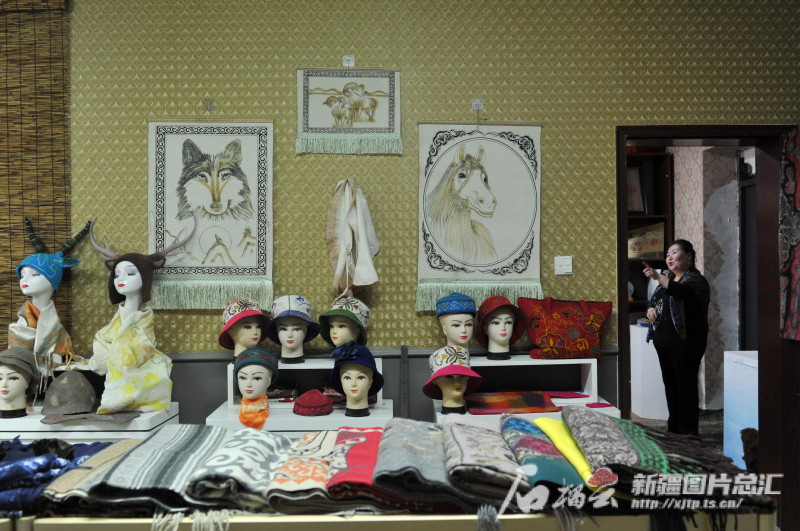
Photo taken on March 10, 2025 shows the studio full of felt-making works at Miaoergou Village in Shuixigou Town, Urumqi County, northwest China's Xinjiang Uygur Autonomous Region.
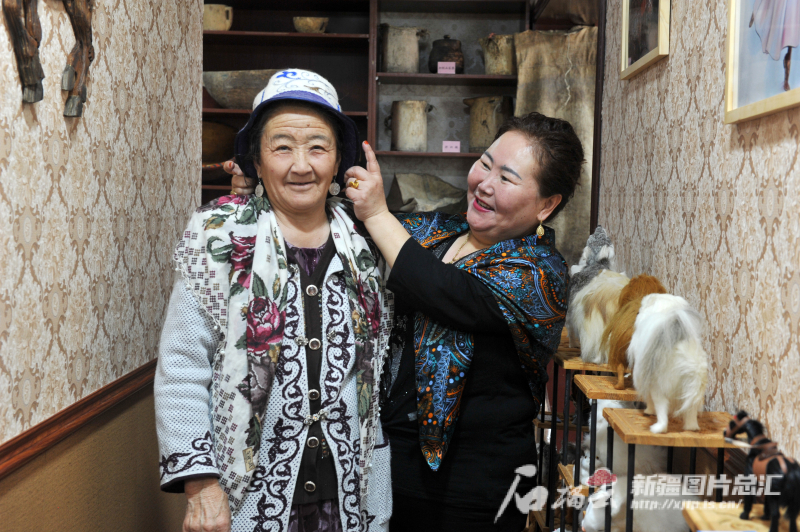
Photo taken on March 10, 2025 shows a villager tries on a felt-making hat created by Hatima.
Hatima not only makes felt herself but also established the Hulalai Ethnic Handicraft Farmers' Professional Cooperative, offering various training courses and research activities. She actively recruits apprentices and teaches the craft, hoping to pass down this ancient skill. She said, "Felt-making is a treasure of the Kazak people, and I cannot let it be lost." Thanks to her efforts, more and more young people are beginning to pay attention to and learn the art of felt-making, and this millennium-old craft is radiating new vitality.
(A written permission shall be obtained for reprinting, excerpting, copying and mirroring of the contents published on this website. Unauthorized aforementioned act shall be deemed an infringement, of which the actor shall be held accountable under the law.)









